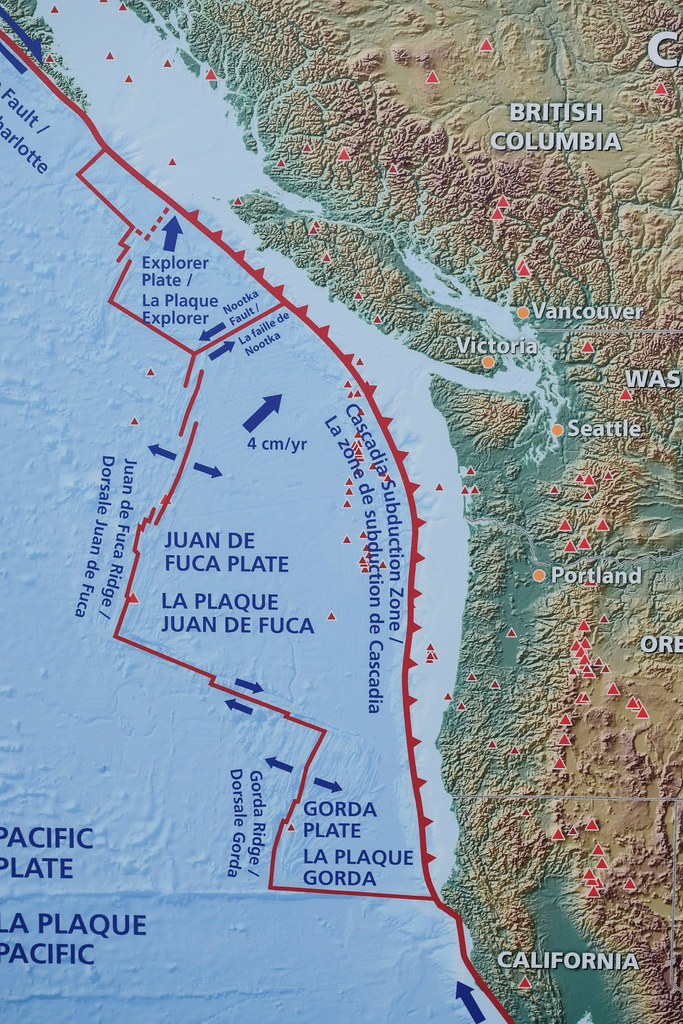Be aware. Be prepared.
The last Cascadia Subduction Zone earthquake event—Magnitude 8.0 to 9.1—was January 26, 1700 (324 years ago), and it happens about every 280 to 350 years. It’s time to get ready.
When the Cascadia Earthquake occurs, services will be likely be interrupted for at least two weeks in Oregon, if not longer. Oregonians can take steps to get ready by planning and preparing yourself and your community.
- Visit Eugene Science Center to engage with our Earthquake Preparedness Exhibition sponsored by the Siletz Tribal Charitable Contribution Fund.
- Visit the Pacific Northwest Seismic Network to monitor regional earthquake activity.
- Visit OregonGeology.org to analyze Oregon seismic hazard maps.
- Practice earthquake drills during The Great Oregon Shake Out.
- Map Your Neighborhood to help create resilient communities.
- Review and implement the recommendations listed below.

ShakeAlert is the earthquake early warning system for Oregon, Washington, and California. It is operated by the United States Geological Survey. ShakeAlert detects an earthquake moments after it begins, so that alerts can be sent to people in the affected area. Because information travels faster than earthquake waves, alerts can reach people quickly before they even begin to feel shaking.
Google provides a ShakeAlert-powered earthquake alert feature that is integrated into the Android Operating System. This service is available in California, Oregon, and Washington on cell phones using the Android operating system. Learn more HERE.
MyShake App: Download Here
ShakeAlert Quick Facts: English
From Oregon.gov:
Homes built before 1974, when Oregon adopted its first statewide building code, will suffer the worst damage in a serious earthquake. Constructed to specific seismic standards, homes built after 1993 are the most likely to withstand earthquakes. Read this document if you’d like to learn more about Oregon’s seismic building code timeline.
Earthquake forces can affect your home in three ways.
- The house may slide off its foundation.
- The cripple walls (walls between the foundation and floor) may buckle and collapse (this is called racking).
- Your house may be lifted off its foundation.
Earthquakes can cause considerable damage to the structure and to utilities and services like water heaters and gas lines.
While there are many types of earthquake retrofitting, the two most common are bolting the house (mudsill) to the foundation and reinforcing the cripple walls with plywood sheathing. (Cripple walls are also called “pony” walls.)
Some older homes do not have cripple walls. There are still several methods available for improving the connection of the framing to the foundation when a house does not have cripple walls.
If a living space sits atop a garage or other open structure, that area may be particularly vulnerable to earthquakes. The garage or open structure (“soft story buildings”) may need additional bracing. Strapping water heaters is now required by code and new water heaters are generally secure. Older water heaters may need to be strapped to the wall studs. There are other items, like masonry chimneys, that may need to be considered in an earthquake retrofit.
Below are some downloadable resources from the Oregon Office of Emergency Management. All resources can be found here: https://www.oregon.gov/oem/hazardsprep/Pages/default.aspx
Living on Shaky Ground: English, Spanish
Creating a Pocket Planner: English, Spanish
2 Weeks Ready – FOOD: English, Spanish
2 Weeks Ready – WATER: English, Spanish
2 Weeks Ready – SENIORS: English, Spanish
2 Weeks Ready – PETS: English, Spanish
2 Weeks Ready – NEIGHBORHOOD: English
Below are some downloadable resources from Oregon State University. More resources can be found here: https://extension.oregonstate.edu/cascadia-earthquake-preparedness
Cascadia Action Steps: English, Spanish

